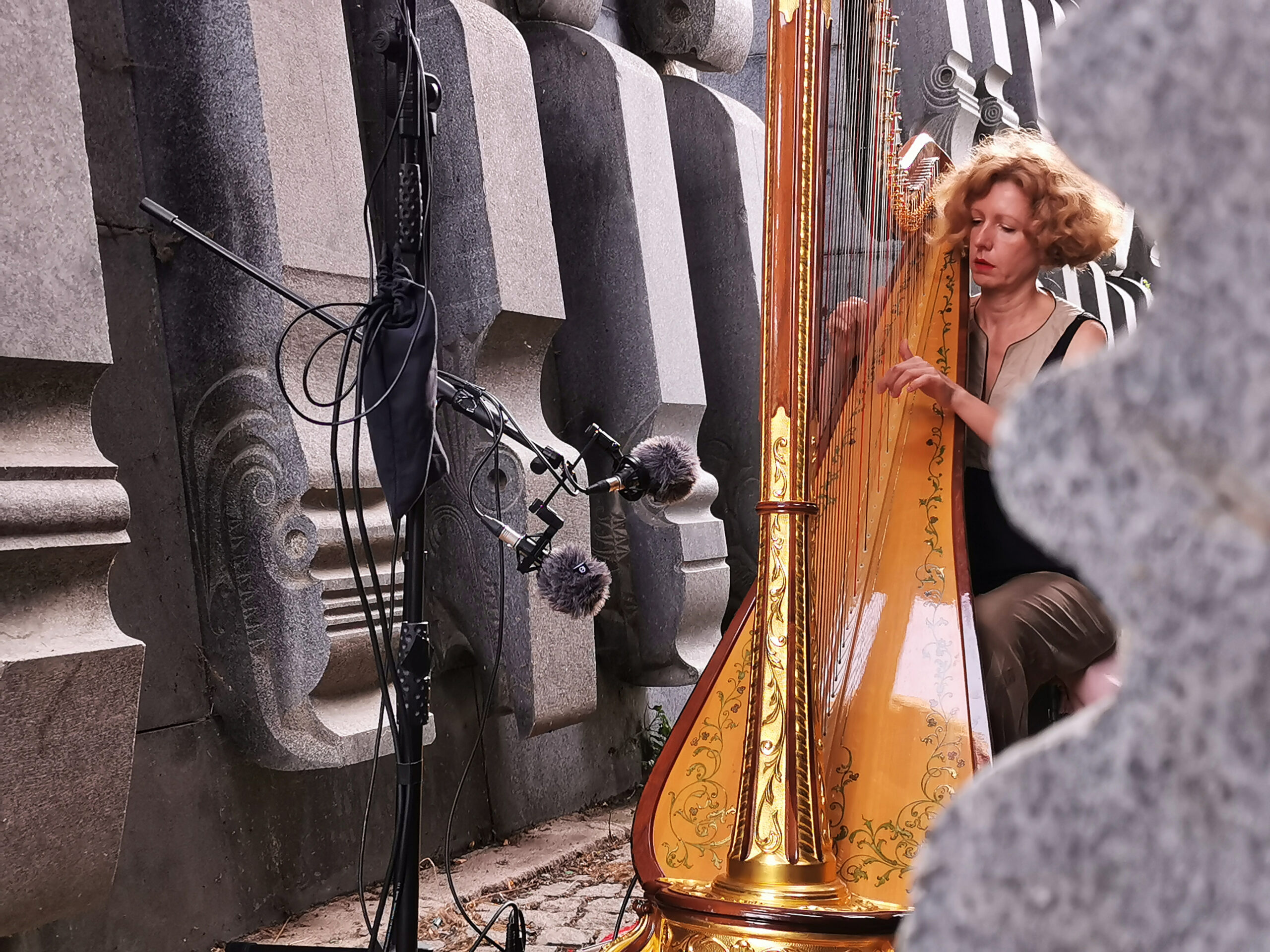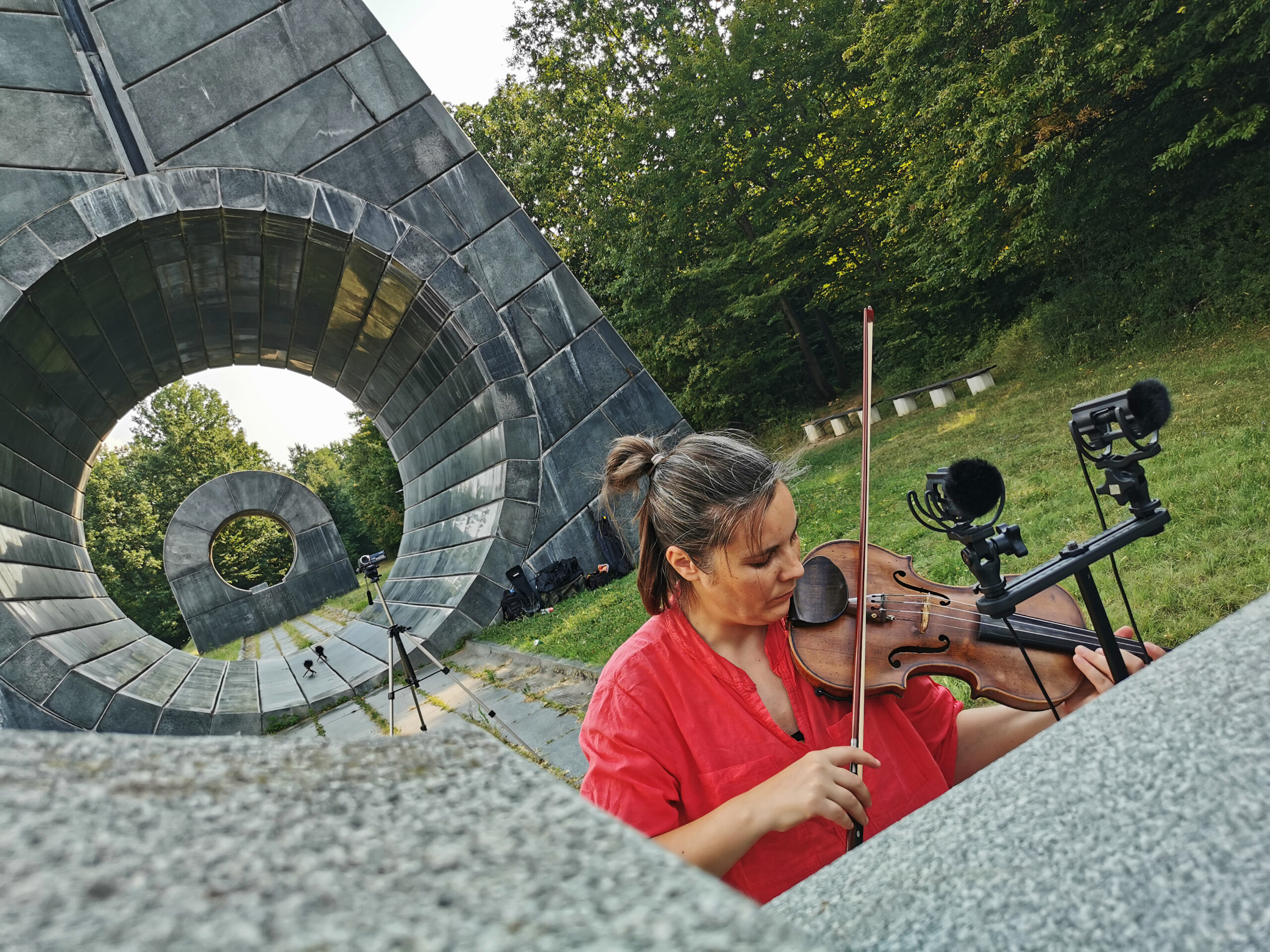
Growing up in Southern Hungary in the mid 80s, László Juhász, now president, producer and publisher of the OnRizom Institute, spent the family summer holidays on the Yugoslav seaside.
Little did he know back then that the mountains and things he drove through, would become central to his professional life.
Fast forward to the early 2010s, László and Nataša Serec, like many others, read headlines with words such as “futuristic”, “brutalist”, “modernist”, “minimalist” taking over the contemporary arts and media platforms. These headlines were accompanied with photographs of places and structures that László had seen so much of as a child, from the backseat of his family’s car on their summer trips to the Yugoslav coast.
These headlines of the early 2010s began shedding new light on the World War II monuments scattered across the former Yugoslav countries. These iconic structures of the region started to attract interest on a global level. Such a momentum was quickly followed by the renowned MoMA produced exhibition “Toward a Concrete Utopia: Architecture in Yugoslavia, 1948-1980” opened in New York in July 2018.
Following the exhibition, a lot of public attention was drawn towards these monuments, resulting in many photography books published on the topic. These publications mainly documented the visual aspect of the monuments, looking at it either from a historical point of view or the architectural or social significance of this rich and multi-layered socialist heritage.
Yet, it wasn’t until the second year of the COVID_19 pandemic when the world took a break and people reconnected with nature, that the founders of OnRizom and the Sounding Spomenik research project, Nataša Serec and László Juhász started visiting these buildings on site. As both were music producers, it was only a given that they would be interested in the sound aspect of these massive and complex structures commemorating World War II.
“It is because of the materials they are made of: mainly concrete, marble, glass and metal and their locations that these buildings are particularly interesting to look at from a sound aspect” says Perec, one of the founders of OnRizom and the Sounding Spomenik Research Project.
With borders closed during the pandemic,, at first, Serec and Juhász were only visiting the monuments in Slovenia. “After this initial experience the concept of Sounding Spomenik was born almost instantly: we have to bring musicians to play portable acoustic instruments in solo within these concrete structures, and to capture the sounds with decent microphones and recording devices. The music played is only half of the project, the other half is a series of honest recordings of these locations’ environmental sounds which means simple field recordings without any manipulation,” says Juhász about the early stages of their project.
World War II monuments are scattered all over former Yugoslav states, making it a natural next step for the two researchers and music producers to want to expand their research and work. This opportunity came from Goethe’s EU-funded Culture Moves Europe – Mobility Call for Artists.

They soon partnered with Serbia’s Studio6, a collective of performing musicians, composers and researchers, devoted to promoting today’s contemporary music. Studio6 hosted them for a three-weeks artistic residency in Serbia, during which in collaboration with local artists, they managed to research and record on two Bogdan Bogdanović designed monuments, in Popina and Čačak.
The 21-day artist-in-residence in Belgrade, Serbia, hosted by Studio6 – Contemporary Music Collective was OnRizom’s first longer research trip where they had enough time to get to know their participating instrument players, local architects, designers and field experts. Besides networking, researching, working on terrain, post-producing and having a residency closing project presentation evening, their main goal was to carefully plan and execute two recording sessions at two iconic memorial sites, both designed by architect Bogdan Bogdanović: in Popina with Serbian violinist Manja Ristić and in Čačak with Serbian harpist Milana Zarić.
On the 25th of July, by the end of their residency, they had a public presentation of the Sounding Spomenik project in Belgrade, in which they were joined by the historian Nenad Lajbenšperger.
Combining music, architecture, design and historical research is the foundation of the Sounding Spomenik project that aims to re-examine Yugoslavia’s World War II memorials widely known as “spomenik” beyond their dominating political and ideological narratives by highlighting their architectural, and most importantly, their sonic significance. Through on-site and field recording sessions and eventually through live performances, the musicians engage with these built structures, documenting their acoustic qualities and the environmental sounds around them, thus creating a living archive that expands our understanding of history and the socialist legacy.
In every location, Serec and Juhász invite local musicians to engage with these structures and in these recordings. Up to this point, they have worked with several local artists in Slovenia and Serbia, and are currently preparing for their residency in Bosnia and Herzegovina, where they are going to expand their research.
Following the exhibition, a lot of public attention was drawn towards these monuments, resulting in many photography books published on the topic. These publications mainly documented the visual aspect of the monuments, looking at it either from a historical point of view or the architectural or social significance of this rich and multi-layered socialist heritage.
Yet, it wasn’t until the second year of the COVID_19 pandemic when the world took a break and people reconnected with nature, that the founders of OnRizom and the Sounding Spomenik research project, Nataša Serec and László Juhász started visiting these buildings on site. As both were music producers, it was only a given that they would be interested in the sound aspect of these massive and complex structures commemorating World War II.
“It is because of the materials they are made of: mainly concrete, marble, glass and metal and their locations that these buildings are particularly interesting to look at from a sound aspect” says Perec, one of the founders of OnRizom and the Sounding Spomenik Research Project.
With borders closed during the pandemic,, at first, Serec and Juhász were only visiting the monuments in Slovenia. “After this initial experience the concept of Sounding Spomenik was born almost instantly: we have to bring musicians to play portable acoustic instruments in solo within these concrete structures, and to capture the sounds with decent microphones and recording devices. The music played is only half of the project, the other half is a series of honest recordings of these locations’ environmental sounds which means simple field recordings without any manipulation,” says Juhász about the early stages of their project.
World War II monuments are scattered all over former Yugoslav states, making it a natural next step for the two researchers and music producers to want to expand their research and work. This opportunity came from Goethe’s EU-funded Culture Moves Europe – Mobility Call for Artists.

They soon partnered with Serbia’s Studio6, a collective of performing musicians, composers and researchers, devoted to promoting today’s contemporary music. Studio6 hosted them for a three-weeks artistic residency in Serbia, during which in collaboration with local artists, they managed to research and record on two Bogdan Bogdanović designed monuments, in Popina and Čačak.
The 21-day artist-in-residence in Belgrade, Serbia, hosted by Studio6 – Contemporary Music Collective was OnRizom’s first longer research trip where they had enough time to get to know their participating instrument players, local architects, designers and field experts. Besides networking, researching, working on terrain, post-producing and having a residency closing project presentation evening, their main goal was to carefully plan and execute two recording sessions at two iconic memorial sites, both designed by architect Bogdan Bogdanović: in Popina with Serbian violinist Manja Ristić and in Čačak with Serbian harpist Milana Zarić.
On the 25th of July, by the end of their residency, they had a public presentation of the Sounding Spomenik project in Belgrade, in which they were joined by the historian Nenad Lajbenšperger.
Combining music, architecture, design and historical research is the foundation of the Sounding Spomenik project that aims to re-examine Yugoslavia’s World War II memorials widely known as “spomenik” beyond their dominating political and ideological narratives by highlighting their architectural, and most importantly, their sonic significance. Through on-site and field recording sessions and eventually through live performances, the musicians engage with these built structures, documenting their acoustic qualities and the environmental sounds around them, thus creating a living archive that expands our understanding of history and the socialist legacy.
In every location, Serec and Juhász invite local musicians to engage with these structures and in these recordings. Up to this point, they have worked with several local artists in Slovenia and Serbia, and are currently preparing for their residency in Bosnia and Herzegovina, where they are going to expand their research.
Please wait while your video is being uploaded...
Don't close this window!